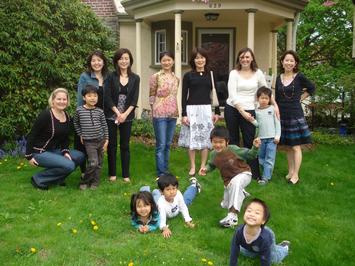
By Joel Kotkin and Mark Schill
“Suburbs,” the great urbanist Jane Jacobs once wrote, “must be a difficult place to raise children.” Yet, as one historian notes, had Jacobs turned as much attention to suburbs as she did to her beloved Greenwich Village, she would have discovered that suburbs possessed their own considerable appeal, particularly for those with children.
Although some still hold onto the idea that suburbs are bad places to raise children, in virtually every region of the country, families with children are far more likely to live in suburbs than in cities. Nearly all the leading locations in percentages of married couples are suburbs, from Midwestern towns like O’Fallon, Missouri to Sugarland, Texas, Naperville, Illinois and Highlands Ranch, Colorado.
In contrast, many of the places with the lowest percentages of children are urban centers. This includes many of the most highly touted urban cores such as Manhattan, Boston, Portland, Seattle and San Francisco.
This is particularly true among more affluent, middle class, educated family households. Despite the rise in the number of children in a few affluent locales, such as the upper east side of Manhattan, most middle class families tend to cluster outside the city core. Even in Manhattan the number of kids falls considerably below the national average after the age of five.
So the question remains: are families important to the planners, developers and politicians who run our cities? Veteran geographer Dick Morrill wonders if they do. He sees many cities turning their backs on working and middle class families, long the ballast of urban society throughout the ages.
Instead, many city planners, and urban developers have focused their attention on the growing ranks of the unattached: the “young and restless,” the “creative class,” and the so-called “yuspie” - the young urban single professional. These advocates suggest that companies and cities should capture this segment, described by one as “the dream demographic.”
The other coveted urban demographic centers on the so-called “empty nester,” largely boomers who have already raised families. Developers, like luxury homebuilder Robert Toll, see a vast movement of such people from the suburbs to the inner city. “We are more hip-hop and happening than our parents,” he explains. “We want the sophistication and joy and music that comes with city dwelling, and doesn’t come with sitting in the burbs watching the day go by…”
Yet although this strategy might work for a handful of cities, childless urbanism may have its limits. There is, for example, little evidence that many empty nesters --- outside of the very rich --- are moving en masse to center cities. The vast majority seem to be staying put in the suburbs while a considerable group heads further out into the periphery and beyond.
This leaves the key demographic for cities to remain viable: the young and educated, one group that has shown a tendency to move into center cities. But there’s a problem with relying of ‘yuspies” in the long run --- they get older and grow up. Right now, as Philadelphia’s Paul Levy suggests, most young couples leave once they start having children. If cities are to hold on to this population, he suggests, they must address the basics important to families, such as public safety, good schools and parks.
This issue will become even more pressing in the next few years. As the current and very large millennial generation ages, they will begin to dominate the housing market. From all accounts, they tend to be family oriented. More than 80 percent thought getting married would make them happy, and some 77 percent said they definitely or probably would want children, while less than twelve percent said they likely would not.
If cities cannot change to appeal to these young people once they enter their 30s and 40s, they will be hard-pressed to maintain, much less expand, the population gains made over the past decade. Once the Millennials are gone, the next generation of young people seems certain to be considerably smaller.
In this sense, the Millennials represent the future hope for cities. The need to shift the focus beyond the denser downtowns and towards many outlying neighborhoods will become a necessity. These places --- think of Queens in New York, South St. Louis or parts of the northwest Philadelphia --- may see less glamorous and more “plain vanilla” than city centers but they already possess some of the basic prerequisites needed by family: relatively low density, work areas nearby, neighborhood shopping streets, churches, schools and parks.
What will happen to the least child-friendly cities over the next generation? Imagine a city with fewer total residences, inhabited by fewer people, although with a significant increase in “luxury” dwellings. In the new urban landscape, high-rise towers for the rich predominate, some of them in refurbished office buildings that formerly employed the middle class. These now become the homes of the “creative class” and the nomadic rich.
This is a city whose funds come largely from the global economy, but whose needs are cared for largely by low-wage workers who eke out their existence in the city, and reside in outlying areas. Ultimately, such a bifurcated society may limit the economic functions that can be carried out in these places. A small cadre of operatives, including the CEO and some senior staff, may remain ensconced in the glamour zone but companies dependent on a broader array of talent will continue to relocate to less exclusive places, either to the suburbs or to different regions.
Such pressures have already helped Houston to replace New York and Los Angeles as the nation’s energy capital. In the future a place like Charlotte will continue its emergence and its drive for financial dominance. Charlotte, suggests local real estate developer, John Harris, can compete against an expensive metropolitan region not only at the top levels of management, but across the board. “It’s hard to be a mass employer in San Francisco,” he notes.
In the end, the elite childless city can be seen as both the culmination of urban development and as a demographic dead end. Unable to lift up outsiders and absorb newcomers, these cities may be able to thrive as high end business hubs and elite playgrounds. But they seem unlikely to absorb more than a trickle of those Americans who may want to move into dense urban places over the coming decades. Instead, this cohort may look to those towns ready and still willing to accommodate families.
Joel Kotkin is the executive editor of Newgeography.com.
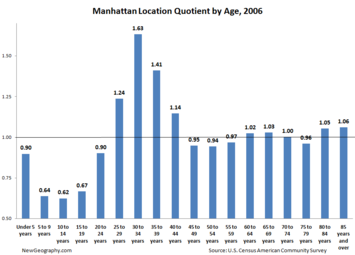
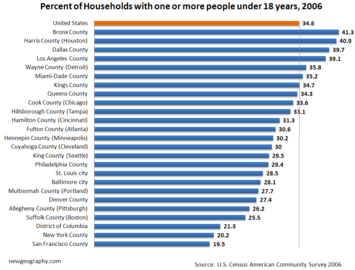
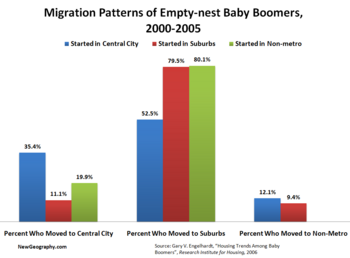

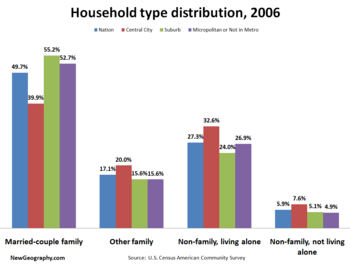













I really want to say thank
I really want to say thank you for the information you have shared. Keep writing these kind of posts and I will be your loyal reader. Thanks again.
girlfriend activation v2
Wonderful illustrated
Wonderful illustrated information. I thank you about that. No doubt it will be very useful for my future projects. Would like to see some other posts on the same subject!
prova senza rischi
Thank you again for all the
Thank you again for all the knowledge you distribute,Good post. I was very interested in the article, it's quite inspiring I should admit. I like visiting you site since I always come across interesting articles like this one.Great Job, I greatly appreciate that.Do Keep sharing! Regards,
series online
Thanks for the nice blog. It
Thanks for the nice blog. It was very useful for me. I'm happy I found this blog. Thank you for sharing with us,I too always learn something new from your post.
easiest way to get a hot girlfriend
I can see that you are an
I can see that you are an expert at your field! I am launching a website soon, and your information will be very useful for me.. Thanks for all your help and wishing you all the success in your business.
what can you do to get rid of tinnitus
I would like to say that
I would like to say that this blog really convinced me to do it! Thanks, very good post.
video presentation
emoney
we dig up answers to these questions about blood sugar, diabetes and how the industry can respond to consumer emoney
Thomson Three
Many people do not realize they are able pay significantly less for a house than what is being asked. All you have to do is learn how to haggle. This does not mean arguing with the seller of the house. Rather, use specific strategies to obtain the house for the price that you want. Thank you. Thomson Three
From a small Kansas town
From a small Kansas town destroyed last year by a tornado, to the war ravaged Gaza Strip, to Linfen, China, one of the most polluted cities on earth, Future City students across the country are dealing with real problems, determined to prevent them and build a better tomorrow.
Future City, in its 16th year, asks middle school students to create a city, first on computer and then in a large tabletop model. Students present and defend their designs before volunteer engineer judges from the community at regional competitions in January.
More than 30,000 students from 1,111 schools – a record number of registered schools – in 40 regions are participating this year. Working in teams with a teacher and volunteer engineer mentor, they create their cities using the SimCity 3000™ videogame donated by Electronic Arts, Inc. of Redwood City, California. They also write a city abstract and an essay on using engineering to solve an important social need – this year's theme asks students to describe how nanotechnology will monitor their city’s structures and systems to keep its infrastructure healthy.
A sampling of projects from across the country indicates that this year’s Future City students are facing some of the most difficult challenges on the globe and engineering solutions.
Students at Westridge Middle School in Shawnee Mission, Kansas, are using the hometown of their fellow Kansans in Greensburg for the basis of their Future City. Last May, a Category 5 tornado destroyed 95 percent of Greensburg and killed 11 residents. “It was blown straight off the map,” explains team member Charlie King Hagan, 13, adding confidently, “so we’re taking what was left and building into the future.”
At Kutztown Area Middle School in Pennsylvania, students are wrestling with the difficulties of rebuilding Gaza, a flashpoint in the Israeli-Palestinian conflict. Relying on months of research, the Future City team is looking far beyond the hostilities by creating a way to desalinate seawater for the impoverished region using cutting edge nanotechnology.
Nanotechnology involves the creation of materials, devices and systems through manipulating matter less than 100 nanometers in length. A nanometer is one-millionth of a millimeter, so engineers and scientists in nanotechnology work with items smaller than molecules, essentially atoms.
The Future City 2008 essay theme also plays a major role for the team from Nativity of Our Lord School in Orchard Park, New York, near Buffalo. Those students have adopted Linfen, China, with a population in excess of four million and more than 200 major contaminants in its air and water, as the model for their city.
“We’re really optimistic,” says Stephanie Houser, an 8th-grade member of the team. “Nanotechnology is so small it can filter arsenic from water and it can absorb air pollution, too.”
Sponsored in part by the National Engineers Week Foundation, a coalition of more than 75 engineering, professional, and technical societies and some 50 corporations and government agencies, Future City is the largest and most successful education program of its kind. Regional winning teams receive an all-expense-paid trip to the Future City National Finals, hosted by Bentley Systems, Incorporated, in Washington, D.C., February 18-20, 2008 during Engineers Week, February 17-23. National grand prize is a trip to U.S. Space Camp in Huntsville, Alabama. Numerous other prizes are awarded at the regional competitions.
“The Minneapolis freeway bridge collapse in August is an example of how we could better monitor our infrastructures using nanotechnology sensors and control systems,” explains CDR Mark Bellis, a civil engineer who serves as commanding officer of the Naval Mobile Construction Battalion-27, also known as the Seabees, and volunteers as mentor to the Orchard Park team. “Future City teaches these young people how the built infrastructure affects their lives.”
John Hofmeister, President of Shell Oil Company, which provides funding to nine regional competitions in addition to the National Finals, says Future City’s forward thinking benefits the entire profession. “Shell encourages achievement in technology and engineering," he notes, "so Future City fits perfectly with our strategy to support promising students as they pursue innovative projects with an underlying emphasis on math and science, extremely important skills for many occupations at Shell. And as the number of graduates in engineering and geosciences diminishes, it's ever more important to encourage students to build these skills at an early age."
Audrey Grossen, a 7th-grader at St. Philip Neri School in Midwest City, Oklahoma, is already developing a grasp of the importance of nanotechnology. “It’s going to be a big part of our lives,” she says. “It’s on the scale of atoms and molecules so it’s pretty much down to the bone.” Her teammate, Hannah Govette, says that their city’s design uses “dendritic polymers, hexagonal carbon tubes and other nanotechnologies” to filter drinking water. Hannah is 13.
Getting to the point where she can discuss such concepts was a lot of work, she admits, but worth it. “I’m busier and I get to bed later,” she says of the after-school hours and weekends spent on Future City, “but I’m completely dedicated 100 percent.” She adds, “It’s great that there’s a project like this that challenges us to the limit and helps us find a career. I’m considering engineering, especially since Future City, and now with learning about nanotechnology, I’d like to pursue that.”
Future City national director Carol Rieg notes that direct, hands-on experience proves to be among the most successful routes to acquainting young people with engineering. “They see engineering as a direct influence on their lives, and how math and science are relevant to their world. Meanwhile the engineer mentors serve as role models that embody the humanity of the profession. We reach these children just when they start to consider where they want to go in their lives.”
For Commander Bellis, who spent a year in Iraq helping to rebuild the infrastructure of Anbar Province, mentors benefit, too, especially from the joy of working with kids.
That connection to the humanity of engineering is not missed on Alex Laudadio, 12, from Kutztown Area Middle School. He says that researching Gaza City’s problems hasn’t daunted his hope for a better tomorrow. “You take all that violence and settle it and get this beautiful outcome.”
For him, the seriousness of his efforts brings gratification. “Sure you can get to level 50 of the video game and that does give you satisfaction,” he says, “but, at the end of Future City you’re proud of what you’ve done.” Alex adds, “That’s true happiness.”
____________________
Submited by : Libros Gratis
National Saving Prize Bond
The draw of National Saving Prize Bond with first number can get to in peak of your thinking.National Saving Prize Bond